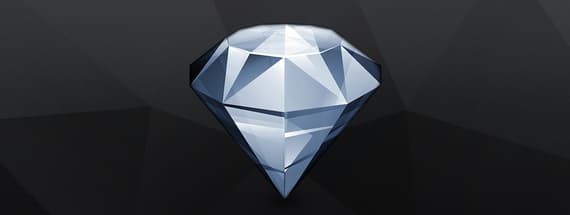
Switching To Sketch - A Guide To Getting Started
In this guide aimed at Photoshop users contemplating a switch to Bohemian Coding's Sketch, I will go into some of the key features that Sketch has to offer, their functionality and the advantages that a Sketch workflow has over Photoshop, and also share some tips & tricks that will help you on your way to UI designer's heaven!
So, You've Had Enough of Photoshop?

In 2011 I wrote a similar article to this one, about getting to grips with Fireworks as an alternative to Photoshop. Since then a lot has changed, most notably Adobe has officially discontinued development of Fireworks. Although Fireworks is still available, nobody is holding their breath for it any more. But! There is some good news too. And it comes in the form of Sketch. Sketch is a (relatively) new, professional tool created for UI designers. And compared to any of the Adobe software packages it is being developed and improving at an incredible rate!
Getting Familiar with Sketch

The First Steps
The first thing you will notice when you launch Sketch, is just how clean and simple the interface is. Don't let this simplicity deceive you. Everything you will need is right there in front of you. The difference is that unlike Photoshop you are only seeing the tools that you need for your job. It shouldn't take long to familiarize yourself with the layout; Along the top of the window you have the toolbar, on the left are the pages/layers and on the right is the inspector (this is where you apply styles etc.)
You might be wondering about the canvas at this stage. When you create a new document you are presented with an infinite canvas, there are no edges (so please don't go looking for them!). When you decide that you do need some boundaries to your work, this is achieved by creating Artboards (I'll go into Artboards in more detail later). For now just know that the canvas is infinite and let's draw something!
From the toolbar select click the first icon on the left, which is the shape selection tool. From the list, select a rounded rectangle and draw your shape onto the canvas. As would be expected you have now created a new layer which can be seen on the left of the app window. Over on the right in the inspector you can now have some fun and experiment with styles. Most of the styles you can apply will be similar to Photoshop's Layer Styles, such as Fills, Borders and Shadows. However in Sketch these styles are more flexible in how they are applied. You can for example have the equivalent of 4 Gradient Overlays, and as many Inner/Drop Shadows or Strokes as your heart desires, all on the same layer. That's how simple it is to get started in Sketch. Next we will go into some of the Key Features in more detail.
Key Features
Pages, Layers & Artboards

Artboards work a little differently and are primarily for setting boundaries around your designs. They assist in exporting your artwork, and are particularly useful for creating and exporting icons or assets. They can also be handy if you know the exact size of the design you will be working on, for example if you are designing an iPhone screen you can create a 640 x 1136 pixel artboard.
 Editable Properties
Editable Properties
If you draw a shape, and later decide that you need to change the corner radius, add an extra point to a star or add a couple more sides to a polygon. You no longer need to delete the original shape and draw it again (WHAT!?).
Yes, in Sketch (unless you flatten an object) shapes always remain editable! Just select the object and head over to the inspector to adjust the appropriate values, your shape will update in real time.
Boolean/Combine Operations

In Sketch, boolean operations are completely non-destructive. You can adjust or re-order them at any point. To view the contents of a combined shape just click the litle black arrow to the left of the shape's name in the layers panel.
 CSS Styles
CSS Styles
An essential feature for any web designer is the ability to export CSS attributes. Illustrator and Fireworks very recently adapted this feature but for some reason Photoshop is still lacking. Although there are third party extensions available for Photoshop that emulate this functionality, it is something really should be a native feature.
Sketch has implemented CSS styles just right. Simply right click any object on the canvas or in the layers panel and select 'Copy CSS Attributes'. You now have the styles copied to your clipboard, simple and efficient! The exported code isn't always perfect, but it is very usable, and even adds comments using your layer names which is a bonus.
Autosave & Versioning

You also have full iCloud integration for your Sketch documents which I'm sure will come in handy for some users.
 Styles
Styles
One of my personal favourite features from Fireworks was its ability to work with Styles. The same is now true of Sketch. Linked Styles are specific to each individual document, when you create a new style and apply it to one or more objects, they become linked and whatever changes you make to the styling are reflected on all elements synced with the same linked style.
You also have Text Styles which work in a very similar way, except you guessed it, with text layers. Text Styles save information such as font size, spacing, colour etc. and can be accessed via the inspector when editing any text layer.
Grids Done Right

Time-saving Tips & Tricks
 Customize the Toolbar
Customize the Toolbar
Everybody's workflow is unique in some ways, and there are tonnes of tools to choose from and re-arrange to suit yours. Simply right click the toolbar and select 'Customize Toolbar..'. There are quite a few useful tools in there that are hidden by default.
 Editing Bitmaps
Editing Bitmaps
Although Sketch is vector application, there may come a time when you need to make basic edits to bitmap images without needing to resort back to Photoshop. To edit a bitmap image, first double click on the image and you will then be able to draw a marquee selection. Hitting the Delete key will erase the selected section of the image, and using the CMD+C and CMD+V shortcuts will allow you to copy and paste sections of the image.
 iOS 7 Style Background Blur
iOS 7 Style Background Blur
For iOS developers this tip could come in very handy. If you want to emulate the iOS7 semi-transparent blurred background effect, first draw a white rectangle above the artwork that you want to be blurred in the background. Set the Opacity of the white shape to about 90% and select the 'Background Blur' feature which can be found by clicking the arrows next to Gaussian Blur.
 Sharing with non-Sketch users
Sharing with non-Sketch users
Sharing files is an essential part of the design industry. Although some people may be confused with anything other than a .psd or .ai file, especially a .sketch file. Sketch can export to PDF, SVG and EPS. All of which are flexible, open formats that can be read by many different applications (including Adobe Illustrator).
Free Sketch Resource
I created a Flat UI Kit especially for Sketch. Go ahead and download it and play around with it within the program. Let me know what you think!


Flat UI Kit for Sketch
The set included standard elements like navigation bar, tooltips, buttons slides etc. The kit is super easy to customize due to Sketch “Link” feature, that allows you to change “linked” elements style with one action only.
View Free Resource >Next Steps
I hope this guide has been helpful and will help you on your way to getting to grips with Sketch as an alternative to Photoshop. Of course this guide has only covered a handful of the many features that Sketch has to offer. If you're still unsure then download the free trial and play with it for 15 days!

 Editable Properties
Editable Properties CSS Styles
CSS Styles Styles
Styles Customize the Toolbar
Customize the Toolbar Editing Bitmaps
Editing Bitmaps iOS 7 Style Background Blur
iOS 7 Style Background Blur Sharing with non-Sketch users
Sharing with non-Sketch users
Comments